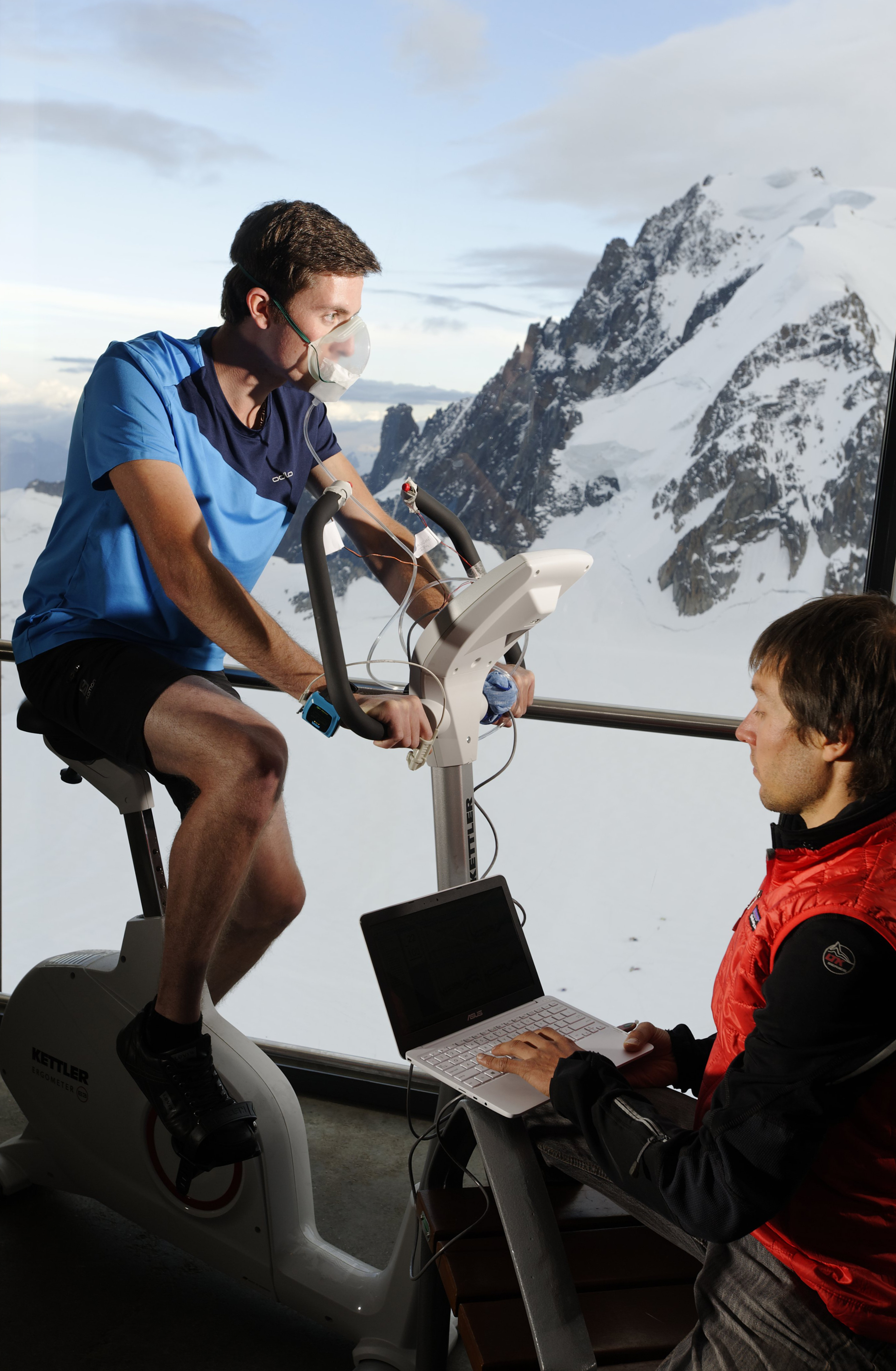- Share
- Share on Facebook
- Share on Twitter
- Share on LinkedIn
- Share url
The Exercice-Hypoxia group was founded in 2011 in HP2 Lab. Managed by Samuel Vergès, it brings together researchers, lecturers (mostly from the Sport education unit), doctors of medicine specialized in exercise physiology and hypoxia, PhD students, post-doctoral students and other students from several education sectors.
Background
In our occidental societies, the intensified prevalence of some chronic pathologies (sleep apnea, obesity, diabetes, etc.) is linked to a significant way of life changes, in particular involving the daily physical exercise. The decrease of our contemporary physical exercise tends to generate and develop cardiovascular and metabolic chronic diseases.
Furthermore, a weak oxygen availability (hypoxia) can be associated to the high-altitude conditions as well as to some pathologies. It is also likely to interfere with physical exertion that needs a reasonable oxygen inflow especially for the muscles.
Research axes
The team research remains around a major axis : The study of patients abilities and effort limitation in order to deepen diagnoses and monitoring. This will help the execution of physical training-based precautionary or healing interventions. Specifically, the team focuses on :
- The hypoxia impact, from healthy subjects in high altitude, to patients effort limitation and their care,
- The study of noxious or protecting pathophysiological and physiological mechanisms (hypoxic conditioning) that can be induced by systemic or local hypoxia expositions.

Research mainstreaming
The team calls on several experimental models such as :
- Hypoxia-exposed rodents under exercise training,
- Severe hypoxia-exposed health subjects (at rest or under physical effort, at awakening or in the night) or prolonged-hypoxia exposed healthy subjects on a high-altitude trip occasion.
- Clinical research protocols for several chronic diseases.
A couple of projects are carried with the other teams of the lab, bringing their experimental or clinical specificity. Diverse approaches are implemented in order to study neuromuscular functions (electrical neurostimulation, electromyography, near infra-red spectroscopy, fMRI, 31P NMR spectroscopy) and the cardiovascular system (sinus variability, echocardiography, etc.)
Major results
For the past years, the team research produced a better understanding of the physical performances limiting mechanisms either :
- In healthy subjects under specific conditions (such as hypoxia or ultra endurance)
- In patients with chronic diseases (sleep apnea, obesity, COPD, neuromuscular pathologies, etc.).
Important publications result from the study of prolonged or severe hypoxic exposition on healthy subjects neuromuscular function and brain. They contribute to a better understanding of low oxygen intake systemic effects.
Finally, the team learned about specific muscular and physical exercise modalities (for instance breathing muscles training) likely to contribute to a better patients with chronic diseases care.
Ambitions
The team aims to improve the understanding of diverse exercise modalities and hypoxic conditions severe and chronic effects with the objective of :
- Identify exertion intolerance mechanisms and noxious hypoxia-linked effects in patients,
- Enable a physical training use and hypoxic conditioning for preventive or healing purposes in chronic diseases.
Ascertaining exercise and hypoxia exposition dose-dependent or threshold effects is a great challenge in the coming years.
- Share
- Share on Facebook
- Share on Twitter
- Share on LinkedIn
- Share url